541 low relevance results shown for 'Red'. Prev |1|2|3|4|5|6|7|8|9|10|11|12|13|14|15|16|17|18|19|20|21|22 | Next | View 100 per page
Showing low relevance matches only. Return to normal search results
DNA - The transmission of heritable characteristics from one generation to the next involves DNA and genes ACSSU097 Year 6 Physical Sciences
Electrical Circuits - Electrical energy can be transferred and transformed in electrical circuits and can be generated from a range of sources ACSSU115 Year 7 Earth and Space Sciences
Earth Moon Sun - Predictable phenomena on Earth, including seasons and eclipses, are caused by the relative positions of the sun, Earth and the moon ACSSU229 Year 10 Physical Sciences
Forces and Motion - The motion of objects can be described and predicted using the laws of physics ACSBL029 Year 11 Biodiversity and the interconnectedness of life
Ecosystem dynamics - Models of ecosystem interactions (for example, food webs, successional models) can be used to predict the impact of change and are based on interpretation of and extrapolation from sample data (for example, data derived from ecosystem surveying techniques ACSBL085 Year 12 Heredity and continuity of life
DNA genes and the continuity of life - Frequencies of genotypes and phenotypes of offspring can be predicted using probability models, including Punnett squares, and by taking into consideration patterns of inheritance, including the effects of dominant, autosomal and sex-linked alleles and mu ACSBL090 Year 12 Heredity and continuity of life
Continuity of life on Earth - Natural selection occurs when selection pressures in the environment confer a selective advantage on a specific phenotype to enhance its survival and reproduction; this results in changes in allele frequency in the gene pool of a population ACSBL091 Year 12 Heredity and continuity of life
Continuity of life on Earth - In additional to environmental selection pressures, mutation, gene flow and genetic drift can contribute to changes in allele frequency in a population gene pool and results in microevolutionary change ACSCH056 Year 11 Molecular interactions and reactions
Intermolecular forces and gases - The shapes of molecules can be explained and predicted using three dimensional representations of electrons as charge clouds and using valence shell electron pair repulsion (VSEPR) theory ACSCH073 Year 11 Molecular interactions and reactions
Rates of chemical reactions - Catalysts, including enzymes and metal nanoparticles, affect the rate of certain reactions by providing an alternative reaction pathway with a reduced activation energy, hence increasing the proportion of collisions that lead to a chemical change ACSCH091 Year 12 Equilibrium acids and redox reactions
Chemical equilibrium systems - Over time, physical changes and reversible chemical reactions reach a state of dynamic equilibrium in a closed system, with the relative concentrations of products and reactants defining the position of equilibrium ACSCH096 Year 12 Equilibrium acids and redox reactions
Chemical equilibrium systems - Equilibrium position can be predicted qualitatively using equilibrium constants ACSCH097 Year 12 Equilibrium acids and redox reactions
Chemical equilibrium systems - Acids are substances that can act as proton (hydrogen ion) donors and can be classified as monoprotic or polyprotic depending on the number of protons donated by each molecule of the acid ACSCH098 Year 12 Equilibrium acids and redox reactions
Chemical equilibrium systems - The strength of acids is explained by the degree of ionisation at equilibrium in aqueous solution, which can be represented with chemical equations and equilibrium constants (Ka) ACSCH099 Year 12 Equilibrium acids and redox reactions
Chemical equilibrium systems - The relationship between acids and bases in equilibrium systems can be explained using the Brĝnsted Lowry model and represented using chemical equations that illustrate the transfer of hydrogen ions ACSCH100 Year 12 Equilibrium acids and redox reactions
Chemical equilibrium systems - The pH scale is a logarithmic scale and the pH of a solution can be calculated from the concentration of hydrogen ions; Kw can be used to calculate the concentration of hydrogen ions from the concentration of hydroxide ions in a solution ACSCH101 Year 12 Equilibrium acids and redox reactions
Chemical equilibrium systems - Acidbase indicators are weak acids or bases where the acidic form is of a different colour to the basic form ACSCH102 Year 12 Equilibrium acids and redox reactions
Chemical equilibrium systems - Volumetric analysis methods involving acidbase reactions rely on the identification of an equivalence point by measuring the associated change in pH, using chemical indicators or pH meters, to reveal an observable end point ACSCH103 Year 12 Equilibrium acids and redox reactions
Oxidation and reduction - A range of reactions, including displacement reactions of metals, combustion, corrosion, and electrochemical processes, can be modelled as redox reactions involving oxidation of one substance and reduction of another substance ACSCH104 Year 12 Equilibrium acids and redox reactions
Oxidation and reduction - Oxidation can be modelled as the loss of electrons from a chemical species, and reduction can be modelled as the gain of electrons by a chemical species; these processes can be represented using half equations ACSCH106 Year 12 Equilibrium acids and redox reactions
Oxidation and reduction - The relative strength of oxidising and reducing agents can be determined by comparing standard electrode potentials ACSCH107 Year 12 Equilibrium acids and redox reactions
Oxidation and reduction - Electrochemical cells, including galvanic and electrolytic cells, consist of oxidation and reduction half reactions connected via an external circuit that allows electrons to move from the anode (oxidation reaction) to the cathode (reduction reaction) ACSCH108 Year 12 Equilibrium acids and redox reactions
Oxidation and reduction - Galvanic cells, including fuel cells, generate an electrical potential difference from a spontaneous redox reaction; they can be represented as cell diagrams including anode and cathode halfequations ACSCH110 Year 12 Equilibrium acids and redox reactions
Oxidation and reduction - Cell potentials at standard conditions can be calculated from standard electrode potentials; these values can be used to compare cells constructed from different materials ACSCH130 Year 12 Structure synthesis and design
Properties and structure of organic materials - Data from analytical techniques, including mass spectrometry, xray crystallography and infrared spectroscopy, can be used to determine the structure of organic molecules, often using evidence from more than one technique ACSPH040 Year 11 Thermal nuclear and electrical physics
Electrical circuits - The energy available to charges moving in an electrical circuit is measured using electric potential difference, which is defined as the change in potential energy per unit charge between two defined points in the circuit ACSPH041 Year 11 Thermal nuclear and electrical physics
Electrical circuits - Energy is required to separate positive and negative charge carriers; charge separation produces an electrical potential difference that can be used to drive current in circuits ACSPH061 Year 11 Linear Motion and Waves
Linear motion and force - Representations, including graphs and vectors, and/or equations of motion, can be used qualitatively and quantitatively to describe and predict linear motion ACSPH064 Year 11 Linear Motion and Waves
Linear motion and force - Momentum is a property of moving objects; it is conserved in a closed system and may be transferred from one object to another when a force acts over a time interval ACSPH065 Year 11 Linear Motion and Waves
Linear motion and force - Energy is conserved in isolated systems and is transferred from one object to another when a force is applied over a distance; this causes work to be done and changes to kinetic and/or potential energy of objects ACSPH073 Year 11 Linear Motion and Waves
Waves - A mechanical system resonates when it is driven at one of its natural frequencies of oscillation; energy is transferred efficiently into systems under these conditions ACSPH076 Year 11 Linear Motion and Waves
Waves - A wave model explains a wide range of lightrelated phenomena including reflection, refraction, total internal reflection, dispersion, diffraction and interference; a transverse wave model is required to explain polarisation ACSPH021 Year 11 Thermal nuclear and electrical physics
Heating processes - Change of state involves internal energy changes to form or break bonds between atoms or molecules; latent heat is the energy required to be added to or removed from a system to change the state of the system
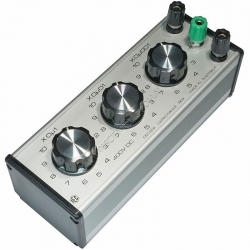
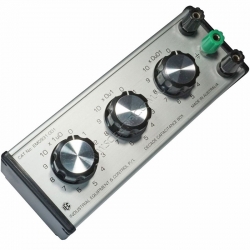
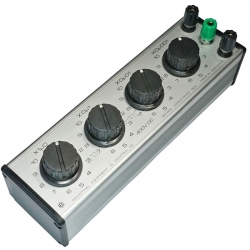
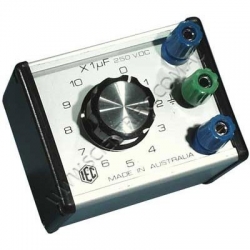
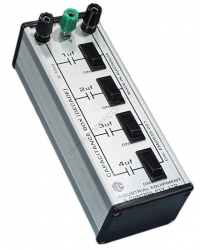
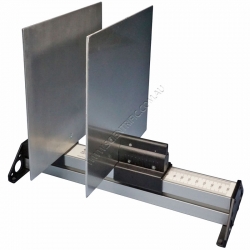
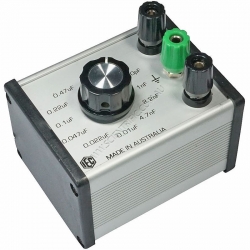
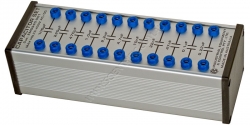
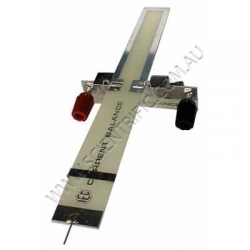
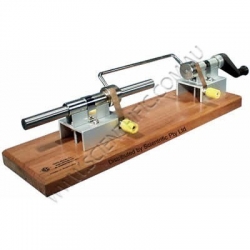
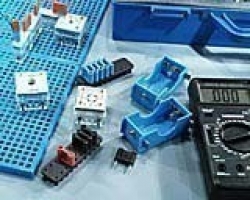
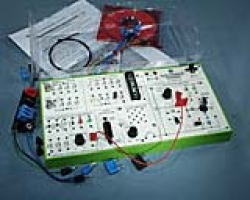

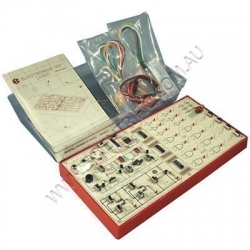
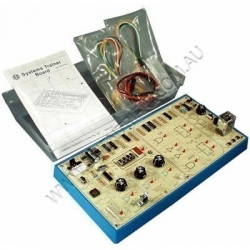
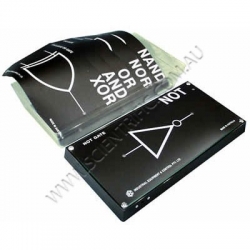
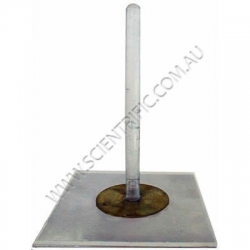


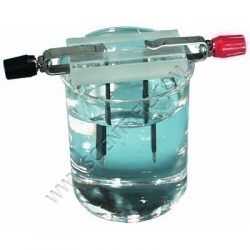
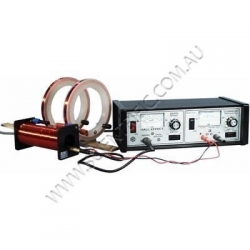
541 low relevance results shown for 'Red'. Prev |1|2|3|4|5|6|7|8|9|10|11|12|13|14|15|16|17|18|19|20|21|22 | Next | View 100 per page
Showing low relevance matches only. Return to normal search results
Curriculum resources related to 'Red'
ACSSU184 Year 10 Biological SciencesDNA - The transmission of heritable characteristics from one generation to the next involves DNA and genes ACSSU097 Year 6 Physical Sciences
Electrical Circuits - Electrical energy can be transferred and transformed in electrical circuits and can be generated from a range of sources ACSSU115 Year 7 Earth and Space Sciences
Earth Moon Sun - Predictable phenomena on Earth, including seasons and eclipses, are caused by the relative positions of the sun, Earth and the moon ACSSU229 Year 10 Physical Sciences
Forces and Motion - The motion of objects can be described and predicted using the laws of physics ACSBL029 Year 11 Biodiversity and the interconnectedness of life
Ecosystem dynamics - Models of ecosystem interactions (for example, food webs, successional models) can be used to predict the impact of change and are based on interpretation of and extrapolation from sample data (for example, data derived from ecosystem surveying techniques ACSBL085 Year 12 Heredity and continuity of life
DNA genes and the continuity of life - Frequencies of genotypes and phenotypes of offspring can be predicted using probability models, including Punnett squares, and by taking into consideration patterns of inheritance, including the effects of dominant, autosomal and sex-linked alleles and mu ACSBL090 Year 12 Heredity and continuity of life
Continuity of life on Earth - Natural selection occurs when selection pressures in the environment confer a selective advantage on a specific phenotype to enhance its survival and reproduction; this results in changes in allele frequency in the gene pool of a population ACSBL091 Year 12 Heredity and continuity of life
Continuity of life on Earth - In additional to environmental selection pressures, mutation, gene flow and genetic drift can contribute to changes in allele frequency in a population gene pool and results in microevolutionary change ACSCH056 Year 11 Molecular interactions and reactions
Intermolecular forces and gases - The shapes of molecules can be explained and predicted using three dimensional representations of electrons as charge clouds and using valence shell electron pair repulsion (VSEPR) theory ACSCH073 Year 11 Molecular interactions and reactions
Rates of chemical reactions - Catalysts, including enzymes and metal nanoparticles, affect the rate of certain reactions by providing an alternative reaction pathway with a reduced activation energy, hence increasing the proportion of collisions that lead to a chemical change ACSCH091 Year 12 Equilibrium acids and redox reactions
Chemical equilibrium systems - Over time, physical changes and reversible chemical reactions reach a state of dynamic equilibrium in a closed system, with the relative concentrations of products and reactants defining the position of equilibrium ACSCH096 Year 12 Equilibrium acids and redox reactions
Chemical equilibrium systems - Equilibrium position can be predicted qualitatively using equilibrium constants ACSCH097 Year 12 Equilibrium acids and redox reactions
Chemical equilibrium systems - Acids are substances that can act as proton (hydrogen ion) donors and can be classified as monoprotic or polyprotic depending on the number of protons donated by each molecule of the acid ACSCH098 Year 12 Equilibrium acids and redox reactions
Chemical equilibrium systems - The strength of acids is explained by the degree of ionisation at equilibrium in aqueous solution, which can be represented with chemical equations and equilibrium constants (Ka) ACSCH099 Year 12 Equilibrium acids and redox reactions
Chemical equilibrium systems - The relationship between acids and bases in equilibrium systems can be explained using the Brĝnsted Lowry model and represented using chemical equations that illustrate the transfer of hydrogen ions ACSCH100 Year 12 Equilibrium acids and redox reactions
Chemical equilibrium systems - The pH scale is a logarithmic scale and the pH of a solution can be calculated from the concentration of hydrogen ions; Kw can be used to calculate the concentration of hydrogen ions from the concentration of hydroxide ions in a solution ACSCH101 Year 12 Equilibrium acids and redox reactions
Chemical equilibrium systems - Acidbase indicators are weak acids or bases where the acidic form is of a different colour to the basic form ACSCH102 Year 12 Equilibrium acids and redox reactions
Chemical equilibrium systems - Volumetric analysis methods involving acidbase reactions rely on the identification of an equivalence point by measuring the associated change in pH, using chemical indicators or pH meters, to reveal an observable end point ACSCH103 Year 12 Equilibrium acids and redox reactions
Oxidation and reduction - A range of reactions, including displacement reactions of metals, combustion, corrosion, and electrochemical processes, can be modelled as redox reactions involving oxidation of one substance and reduction of another substance ACSCH104 Year 12 Equilibrium acids and redox reactions
Oxidation and reduction - Oxidation can be modelled as the loss of electrons from a chemical species, and reduction can be modelled as the gain of electrons by a chemical species; these processes can be represented using half equations ACSCH106 Year 12 Equilibrium acids and redox reactions
Oxidation and reduction - The relative strength of oxidising and reducing agents can be determined by comparing standard electrode potentials ACSCH107 Year 12 Equilibrium acids and redox reactions
Oxidation and reduction - Electrochemical cells, including galvanic and electrolytic cells, consist of oxidation and reduction half reactions connected via an external circuit that allows electrons to move from the anode (oxidation reaction) to the cathode (reduction reaction) ACSCH108 Year 12 Equilibrium acids and redox reactions
Oxidation and reduction - Galvanic cells, including fuel cells, generate an electrical potential difference from a spontaneous redox reaction; they can be represented as cell diagrams including anode and cathode halfequations ACSCH110 Year 12 Equilibrium acids and redox reactions
Oxidation and reduction - Cell potentials at standard conditions can be calculated from standard electrode potentials; these values can be used to compare cells constructed from different materials ACSCH130 Year 12 Structure synthesis and design
Properties and structure of organic materials - Data from analytical techniques, including mass spectrometry, xray crystallography and infrared spectroscopy, can be used to determine the structure of organic molecules, often using evidence from more than one technique ACSPH040 Year 11 Thermal nuclear and electrical physics
Electrical circuits - The energy available to charges moving in an electrical circuit is measured using electric potential difference, which is defined as the change in potential energy per unit charge between two defined points in the circuit ACSPH041 Year 11 Thermal nuclear and electrical physics
Electrical circuits - Energy is required to separate positive and negative charge carriers; charge separation produces an electrical potential difference that can be used to drive current in circuits ACSPH061 Year 11 Linear Motion and Waves
Linear motion and force - Representations, including graphs and vectors, and/or equations of motion, can be used qualitatively and quantitatively to describe and predict linear motion ACSPH064 Year 11 Linear Motion and Waves
Linear motion and force - Momentum is a property of moving objects; it is conserved in a closed system and may be transferred from one object to another when a force acts over a time interval ACSPH065 Year 11 Linear Motion and Waves
Linear motion and force - Energy is conserved in isolated systems and is transferred from one object to another when a force is applied over a distance; this causes work to be done and changes to kinetic and/or potential energy of objects ACSPH073 Year 11 Linear Motion and Waves
Waves - A mechanical system resonates when it is driven at one of its natural frequencies of oscillation; energy is transferred efficiently into systems under these conditions ACSPH076 Year 11 Linear Motion and Waves
Waves - A wave model explains a wide range of lightrelated phenomena including reflection, refraction, total internal reflection, dispersion, diffraction and interference; a transverse wave model is required to explain polarisation ACSPH021 Year 11 Thermal nuclear and electrical physics
Heating processes - Change of state involves internal energy changes to form or break bonds between atoms or molecules; latent heat is the energy required to be added to or removed from a system to change the state of the system
Products related to 'Red'

IEC Capacitance Box 0.001uF to 1.111uF 400V DC
IEC CAPACITOR BOX 3 DIAL 1.11µF x 0.001µF 400V DC
IEC Capacitor boxes are used to introduce an adjustable capacitance value into any electrical circuit.
This capacitance box with three rotary switches, provides simple and reliable selection of capacitance to 1.11µF in 0....
Order code: EM0930-001

IEC Capacitance Box 0.01uF to 11.11uF 400V DC
IEC CAPACITOR BOX 3 DIAL 11.1µF x 0.01µF 400V DC
IEC Capacitor boxes are used to introduce an adjustable capacitance value into any electrical circuit.
This capacitance box with three rotary switches, provides simple and reliable selection of capacitance to 11.1µF in 0.0...
Order code: EM0931-001

IEC Capacitance Box 0.001uF to 11.111uF 400V DC
IEC CAPACITOR BOX 4 DIAL 11.11µF x 0.001µF 400V DC
IEC Capacitor boxes are used to introduce an adjustable capacitance value into any electrical circuit.
This capacitance box with four rotary switches, provides simple and reliable selection of capacitance to 11.11µF in 0...
Order code: EM0932-001

IEC Capacitance Box 1uF to 10uf 400V DC
IEC CAPACITANCE BOX 1 DIAL 10µF x 1.0µF 250V DC
IEC Capacitor boxes are used to introduce an adjustable capacitance value into any electrical circuit.
This rotary switched capacitance box provides simple and reliable selection of capacitance from 1µF to 10µF in 1µF steps...
Order code: EM0935-001

IEC Capacitance Box 1uF to 10uF 250V DC
Discontinued - only 4 in stock
IEC CAPACITANCE BOX 4 SWITCH 10x1.0µF 250V
IEC Capacitor boxes are used to introduce an adjustable capacitance value into any electrical circuit.
This capacitance box with four rocker switches provides simple and reliable selection of capacitance from 1µF to 10µF in 1µF ...
Order code: EM0935-002

IEC Capacitor Air Aepinus 200x283mm square adjustable 2 to 250pF
IEC CAPACITOR AIR AEPINUS 200mm AND 283mm SQUARE ADJUSTABLE 2-250pF
The IEC Aepinus Air Capacitor is used to study the theory of capacitance and charge whilst using air as the insulation medium. The charge stored in a capacitor depends on the area of the capacitor plates,...
Order code: EM0938-001

IEC Capacitor Box 1 Dial 12 Step 220pF-1uF 250V DC
IEC CAPACITOR BOX ONE DIAL 12 STEP 220pF TO 1µF 250V DC
Useful for general purpose electronic work, this IEC capacitor box has a single rotary dial with 12 steps allowing various capacitors to be selected one by one rather than being added in the traditional decade manner...
Order code: EM0939-001

IEC Capacitor Set Of 11 100pF To 0.47uF
IEC CAPACITOR SET ELEVEN STEP 100pF TO 0.47µF
Used to introduce a selected capacitance into any electrical circuit, this set of 11 capacitors without switches is mounted in a strong, compact metal housing. The high quality 250V DC capacitors are soldered directly onto 4mm...
Order code: EM0940-001
IEC Charge on Capacitor with Power Supply
IEC CHARGE ON A CAPACITOR WITH POWER SUPPLY
Using the IEC Charge on Capacitor, The value of a capacitor in microfarads (uF) can be calculated using measurements and first principles.
The charging current is adjusted to be very small and this set current is held const...
Order code: EM0965-001

IEC Current Balance Kit Small
IEC SMALL CURRENT BALANCE KIT
The IEC Current Balance Kit is designed to fit directly to the EM0090-001 IEC Air Cored Solenoid (sold separately) to investigate the force between a magnetic field and the magnetic field of a current carrying wire.
A platform is firmly at...
Order code: EM1230-001

IEC Electromagnetic Induction Apparatus
IEC ELECTROMAGNETIC INDUCTION APPARATUS
The IEC Electromagnetic Induction Apparatus is a single turn of heavy wire that is rotated by hand around a strong rod shaped magnet. This single turn cuts the magnetic field to create a very small voltage which can be detected by a...
Order code: EM1740-001

IEC Electronics Kit Basic
IEC BASIC ELECTRONICS KIT
The IEC Basic Electronics Kit contains components to teach basic electronic theory using a large range of experiments and investigations. The components have synthetic rubber feet that press and hold firmly into blue perforated back plates that c...
Order code: EM1764-001

IEC Electronics and Photonics Kit
IEC ELECTRONICS AND PHOTONICS KIT
The IEC Electronics and Photonics Kit is a special panel of electronic components that enable students with minimal supervision to investigate resistors and potential dividers, capacitors and their uses, component characteristics, transi...
Order code: EM1765-001

IEC Electronics and Photonics CD of Experiments
IEC ELECTRONICS AND PHOTONICS EXPERIMENTS CD
A comprehensive CD of 9 experiments and training for use with the EM1765-001 IEC Electronics and Photonics Kit. Written and prepared specially for IEC, the Word files for all the experiments clearly explain the theory as the st...
Order code: EM1765-002

IEC Electronics Kit Digital Logic Gates
IEC ELECTRONICS DIGITAL TRAINER
The IEC Electronics Digital Trainer is a panel with non-removable components for teaching basic digital electronics. Rectification, filtering, regulation, oscillators and transistors are briefly covered before the students study the applica...
Order code: EM1766-001

IEC Electronics Kit Electronic Systems
IEC ELECTRONICS KIT SYSTEMS TRAINER
The IEC Electronics Kit Systems Trainer challenges students to use their ingenuity to design and build their own working electronic systems. Little teacher involvement is required before students are learning the principles of digital l...
Order code: EM1767-001

IEC Electronics Kit Demo Gates
IEC ELECTRONICS TRAINER DEMO GATES
The IEC Demonstration Gates trainer is a fun way to learn the functions of electronic digital gates. Teachers can demonstrate to students or students can test one another until the function of all the types of gates is fully understood.
...
Order code: EM1768-001

IEC Electrophorus 50mm Metal
IEC ELECTROPHORUS METAL 50mm DIAMETER
This electrophorus consists of a 50mm diameter flat metal disc fixed to an insulating handle, a metal base plate and an insulating plate that rests on the base plate. When an electric charge is applied between the base plate and the d...
Order code: EM1780-001

IEC Electrophorus 100mm Metal
IEC ELECTROPHORUS METAL 100mm DIAMETER
This electrophorus consists of a 100mm diameter flat metal disc fixed to an insulating handle, a metal base plate and an insulating plate that rests on the base plate. When an electric charge is applied between the base plate and the...
Order code: EM1781-001

IEC Electrophorus 150mm Metal
IEC ELECTROPHORUS METAL 150mm DIAMETER
This electrophorus consists of a 150mm diameter flat metal disc fixed to an insulating handle, a metal base plate and an insulating plate that rests on the base plate. When an electric charge is applied between the base plate and the...
Order code: EM1782-001

IEC Electrodes Stainless Steel Adjustable Plate
IEC STAINLESS STEEL ADJUSTABLE PLATE ELECTRODES
This adjustable stainless steel plate electrode set is self contained and can be rested directly over the rim of a small beaker for studies in electrical conductivity in liquids. The 75mm long plates are insulated except for...
Order code: EM1790-001

IEC Hall Effect Probe and Power Supply
IEC HALL EFFECT PROBE AND CONSTANT CURRENT POWER SUPPLY
The IEC Hall Effect apparatus is used to measure magnetic fields created by permanent magnets or electromagnets. Hall Effect sensors are used in many applications in industry where switching must occur or signals mus...
Order code: EM1900-001
IEC Coil Large Air Wound 150mm Diameter with Foot
IEC LARGE AIR WOUND COIL 50T x 2A WITH FOOT
A large 150mm diameter air cored coil wound to produce a magnetic field in air for general studies in magnetism. It is similar to a Helmholtz coil but with 50 turns of 0.9mm wire to carry a larger current of about 2A. Made from...
Order code: EM1915-020
IEC Coil Large Air Wound 150mm Dia. 250T x 2A with Foot
IEC LARGE AIR WOUND COIL 250T x 1A WITH FOOT
A large 150mm diameter air cored coil wound to produce a magnetic field in air for general studies in magnetism. It is similar to a Helmholtz coil but with 250 turns of 0.56mm wire to carry a larger current of about 1A. Made f...
Order code: EM1915-030
IEC Coil Large Air Wound 150mm Dia. 500T x 2A with Foot
IEC LARGE AIR WOUND COIL 400T x 1A WITH FOOT
A large 150mm diameter air cored coil wound to produce a magnetic field in air for general studies in magnetism. It is similar to a Helmholtz coil but with 400 turns of 0.45mm wire to carry a larger current of about 1A. Made f...
Order code: EM1915-040
541 low relevance results shown for 'Red'. Prev |1|2|3|4|5|6|7|8|9|10|11|12|13|14|15|16|17|18|19|20|21|22 | Next | View 100 per page



 ,
,